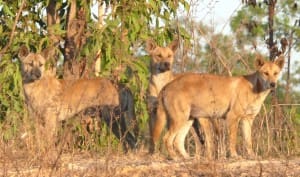Livestock producers in areas affected by wild dogs are being forced to dedicate close to a month out of every year to tackling the problem.
 A new report prepared by ABARES documents the results of a survey of over 1000 landholders in wild dog-affected areas.
A new report prepared by ABARES documents the results of a survey of over 1000 landholders in wild dog-affected areas.
The report highlights the importance of strong leadership and coordinated on-the-ground efforts to combat the problem of wild dogs.
The latest report shows that on average, each landholder surveyed spent about 26 days and around $7200 a year on wild dog management, and were forced to remain constantly vigilant for attacks.
Those figures only take into account the direct costs of management efforts, like baiting and trapping, materials and so on.
In 2004 the financial costs incurred across the whole sector from livestock losses, disease transmission and control costs were estimated to be up to $66 million per year.
The current costs could be significantly higher, Federal agriculture minister Barnaby Joyce said.
“Of course, the financial cost doesn’t account for the personal impacts of wild dog attacks, that leave farmers deeply distressed and angry,” he said.
“This report serves to underline what a major problem wild dogs are for our sheep and cattle farmers, and for our agricultural sector as a whole. This is why the government has already taken strong action in the fight against wild dogs.”
The Government recently announced an investment of an additional $1.35 million for the continued implementation of the National Wild Dog Action Plan, which builds on an initial investment of $280,000 in May 2014.
A further $1 million has also been announced for a project to develop and test the “Wild Dog Alert”—an early warning system that has the potential to save farmers time and money in managing wild dogs, and reduce the impacts of wild dog attacks. $10m committed in last year’s drought assistance package for pest management across Australia, as well as an additional $25.8 million in this year’s Budget to continue to manage the impacts of pest animals and weeds in drought-affected areas.
The ABARES report was commissioned by Australian Wool Innovation.
The full report is available on the Australian Wool Institute website at www.wool.com/wilddogs

HAVE YOUR SAY